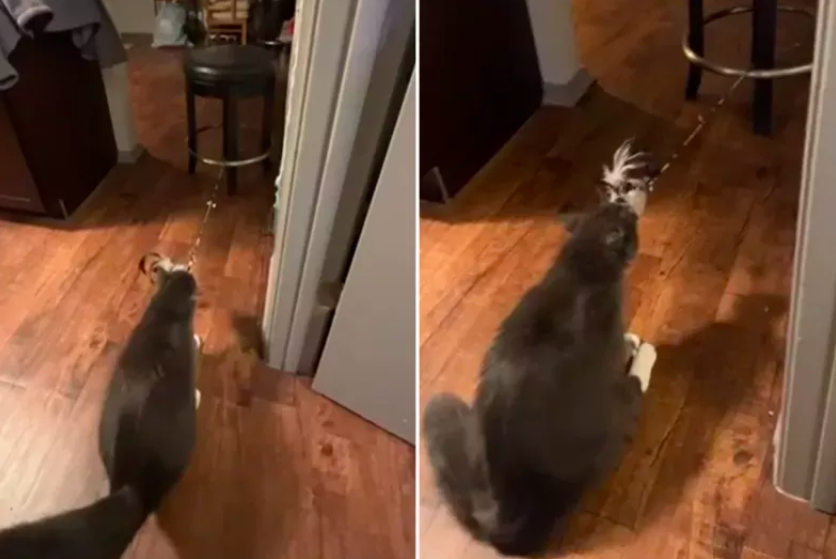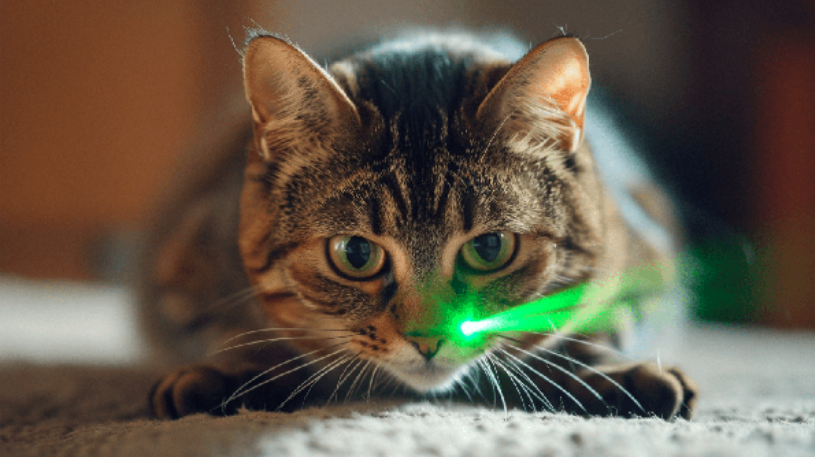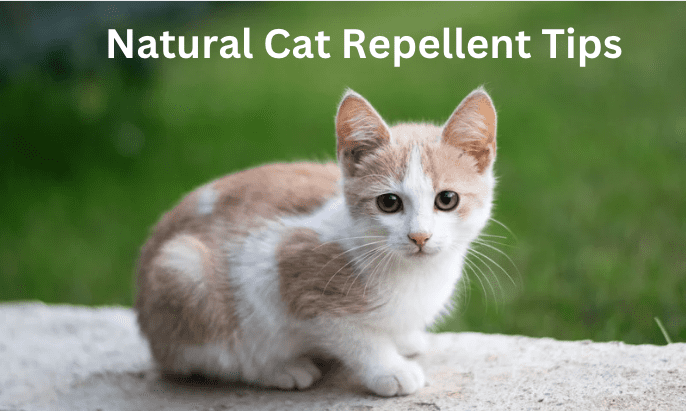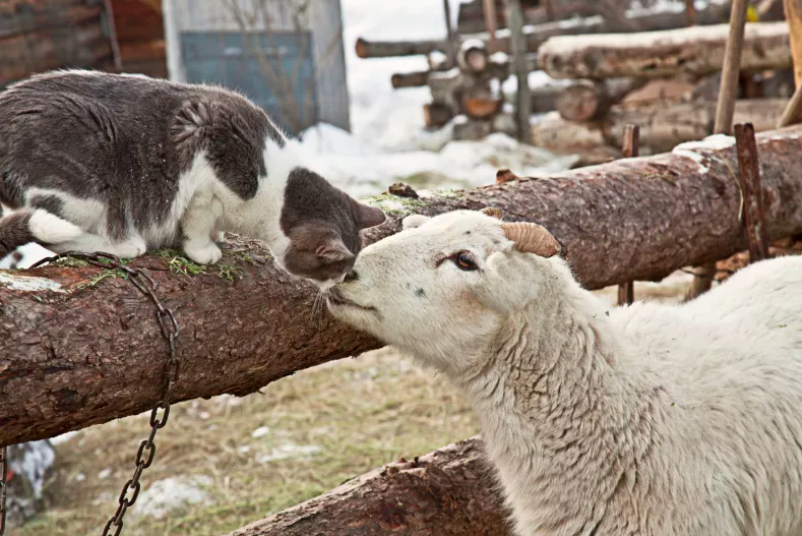Cats
Top 12 Exotic Cat Breeds That Are Legal to Keep as Pets!

Top 12 Exotic Cat Breeds That Are Legal to Keep as Pets in the United States of America (With Pictures)
The American Shorthaired Cat is most likely the most common breed in the United States. If a cat has the appearance of a typical cat, then it is most likely of this breed.
Many cats found in shelters are mixed breeds, but they have a strong preference for American Shorthaired cats, one of the most popular breeds in this part of the world, and thus attract the most attention.
Although many exotic breeds are not legal to own in the United States, quite a few are. Some breeds are only considered exotic in the United States because they resemble nothing like the American Shorthair in appearance.
When it comes to these one-of-a-kind cats, the laws in each state in the United States are frequently different. A completely legal cat in one state may be illegal in another state. It may be necessary to obtain a license to own certain cat breeds in some areas.
Some jurisdictions have confusing and complicated laws, such as those prohibiting the export of cats from other jurisdictions. This is because exotic cats, such as wildcats, are not suitable as household pets.
They are typically not domesticated, and they would probably prefer to live in the wild rather than in a human household if given a choice.
It is preferable to adopt a regular cat from a shelter rather than paying the often exorbitant prices for an exotic cat on the market. However, if you have your heart set on one, make sure to check your local laws before making the purchase.
1). Serval

A Serval is a wildcat from Africa that is legal to own and hunt in some parts of the United States. They are approximately the size of a medium-sized dog, weighing between 20 and 40 pounds on average.
They have cheetah-like patterns on their coat, making them appear tall and slender. They look a lot like a cheetah and are frequently mistaken for one when they are not. They are, on the other hand, significantly smaller.
These cats are reserved and self-sufficient. It is common for them to flee and hide from people they do not know or are not overly affectionate. Most of the time, they are not threatening or dangerous to others unless they feel cornered.
When they are stressed, they would prefer to flee rather than face a confrontation. In the wild, they prey on small animals. Typically, this includes rats and other rodents of a similar nature.
They will occasionally prey on a bird or a small antelope, but this is rare. They will consume approximately 2-3 pounds of meat per day while in captivity. They prefer to run rather than climb, so they are less difficult to care for than some other exotic cats.
Because they prefer to keep all four of their feet on the ground, they are less likely to get into trouble or attempt to flee. They do not meow in the same way that domestic cats do.
Instead, hissing is used to communicate with one another for the most part. This frequently indicates that their hissing is not necessarily harmful. It is simply the only means of communication available to them.
2). Caracals Cat

This cat is native to Africa, the Middle East, India, and Central Asia, where it can be found in large numbers. They are available in different weights, ranging from 19 to 40 pounds each. Females, on the other hand, are significantly smaller than males.
This cat species preys on small mammals, rodents, and, on rare occasions, antelopes in their natural habitat. These cats behave in a manner similar to how you would expect a domestic cat to behave.
When they want to, they are playful and interact with their owners, but this is only when they are asked. They appear to have the independence of a domestic feline but to a much greater extent than that.
They could ignore their owners for days before deciding that they want to cuddle with them again. The cats in this group are more active than the other cats. They can engage in destructive behavior, such as tearing up furniture if they are not given the proper exercise.
They require an enclosed space to run and play, which is why “catios” are frequently recommended. On the other hand, these outdoor areas must be significantly larger than those used by domestic cats.
Like many medium-sized wild cats, Caracal cats use hissing to communicate almost everything, including their location. Although it may appear threatening, these cats are rarely aggressive toward humans.
3). Ocelots

Ocelots are occasionally kept as domestic pets in the United States. On the other hand, they are illegal in many places and extremely rare in others.
Because there are no domestic breeders in the United States, unlike the other cats on this list, they tend to be much wilder than the other cats. They are generally more difficult pets to care for.
Because of their fierce independence, ocelots will not listen to anyone who approaches them. They are difficult to train because they are deafeningly unresponsive to any commands. They can be a little playful with their companions, but they are generally reserved and prefer to be alone.
These cats are not particularly social, and they will flee if anyone comes to the door. They are not suggested for most pet owners because they do not adapt well to living in a home environment. There’s a good reason why they’re not commonly kept as pets.
4). Canadian Lynx
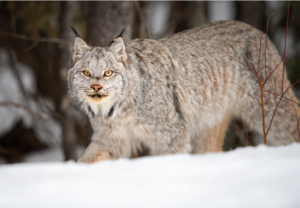
As its name implies, this particular Lynx is indigenous to northern North America. They are extremely active climbers who prefer to be at the top of the mountain above everyone else. It is essential that the home is designed with this in mind.
If you do not provide this cat with appropriate climbing opportunities, they will find other ways to get to a higher perch. This frequently results in them getting into things they shouldn’t be in and attempting to climb things too tall for them, such as televisions.
They have difficulty forming close relationships with others and tend to live solitary lives. Although they are adaptable and not particularly temperamental, they can be easily integrated into human society.
Just don’t expect them to interact with you as much as you would expect from domestic cats. They’re far more likely to do their own thing than participate in games.
They are one of the exotic cats on this list who do not enjoy being walked, perhaps because they prefer to climb instead of walking. They do have a lot of furs and shed a lot, which is understandable. Grooming is frequently necessary.
5). Bobcats

These short, muscular cats are native to North America and are known as bobcats. As one of the few exotic cats that enjoy being around people and will often form strong bonds with their owners, this species stands out.
The fact is that they are one of the few cats capable of killing an adult human being. Consequently, they can be quite dangerous to keep if they are not raised properly from birth.
In this way, they are similar to large dogs, except that dogs have been domesticated for a much longer period. Due to their strength and size, they are not recommended for use in households with children. They have the ability to injure or even kill a small child.
Although constant supervision is required, it is not always enough to keep up with these elegant felines. Bobcats can be friendly and affectionate if humans have raised them.
Because these cats require specialized care, finding a high-quality breeder is essential, as proper care is frequently required to ensure that these cats are safe to keep as pets.
6). Asian Leopard Cat

Leopard of the Orient Cats are occasionally kept as pets, but they are not the best choice. Their habits are nocturnal, and they are extremely shy. The vast majority will flee from humans and take an extremely long time to warm up to their new families.
Their guests or anyone outside the household is rarely welcomed into their homes. They are easily startled and will flee or become aggressive if they are frightened. On the other hand, they can become relatively docile pets if they are extensively socialized.
It is common for this cat to require a license to be owned. They can be difficult to obtain legally and necessitate the submission of specific documentation.
Some subspecies are threatened with extinction, making them even more difficult to obtain and maintain. The laws differ significantly from one state to the next.
7). Jungle Cat

Asian, Egyptian, and Sri Lankan populations are native to the region. Because they are frequently used to produce domestic hybrids, they are one of the more common cats to find and adopt.
When kept in captivity and well-cared for, they can live for 15 to 20 years in most circumstances. They are fearful, docile cats who prefer to spend most of their time hiding. They are apprehensive in the presence of loud noises and a large number of people.
Quiet households and single owners are the best candidates for owning a Jungle cat. They require a great deal of privacy, so make sure you provide them with various hiding places throughout the house.
If you cannot provide privacy in other ways, you can also keep them in a large, outside enclosure for the majority of the time.
8). Geoffroy’s Cat

The Geoffroy’s Cat is the world’s tiniest wildcat. They weigh about 4 to 8 pounds when fully grown, making them significantly smaller than most of the other cats on this list.
This makes them not particularly dangerous to humans, explaining why so many people keep them as pets. They are about the same size as domestic cats, though they don’t behave the same way as cats.
These cats are extremely rare, even though they are being bred in captivity. As a result of having a small gene pool in captivity, breeding them is a little more difficult than with other cats. Because of their smaller body stature, they are more timid and docile than other exotic felines.
The training process takes time, and they require extensive socialization before being accepted into a household. Even if they were raised in captivity, many dogs are prone to stress-related problems due to their difficulty adjusting to their new life as pets.
They are not particularly social, though they will form bonds with others if given the opportunity and time. We do not advise them for larger families because they require a relatively quiet environment to thrive.
These cats can become aggressive if they believe they are being pursued. Even though they are small, they have the potential to cause significant damage. Even if they aren’t much larger than a domestic cat, you must still treat them as if they were wild.
9). Siberian Lynx

The Siberian Lynx is a completely different species from the Canadian Lynx, although closely related. Because both species are Lynxes, they tend to act similarly when kept as domestic pets.
Moreover, in the United States, they are more difficult to come by and more expensive. This is most likely because anyone interested in purchasing a cat of this type typically purchases a Canadian Lynx, which is less expensive and easier to come by.
Males are typically significantly larger than females and can weigh up to 80 pounds in some cases. An adult human can be killed in seconds by a cat of that size, so extreme caution should be exercised when keeping one of these animals as a pet.
Females are much smaller than males and can weigh as little as 40 pounds, which is still a substantial amount in terms of cat weight. Males can weigh as much as 100 pounds.
These Lynxes are playful and hyperactive, and they enjoy playing with each other. They need a very great deal of exercise and plenty of space to roam. Otherwise, they may become disinterested and end up in trouble.
Even if you want to keep them indoors most of the time, many owners recommend providing them with a safe outdoor space to run around and play. They enjoy walking on a leash and are well-known for having a dog-like demeanor and disposition.
10). Savannah Cat
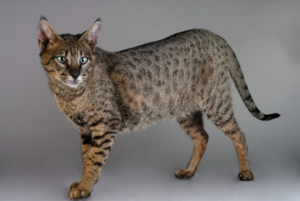
The Savannah cat has the best of both worlds in appearance and temperament. They’re a cross between a domestic cat and a Serval in appearance. Most of the time, they are sold to the next generation.
Because F1 Savannah cats have the highest concentration of Serval blood, they are larger and behave more like wild cats. When you move down the line, the cats become smaller and tamer in their appearance.
This allows you to select the exact combination of wild and domestic animals you require for your lifestyle. Savannah-colored cats are typically more expensive than cats with domestic patterns, bred for domestication.
If you are willing to give up the wild-looking pattern, you could save a significant amount of money on these cats. Although many breeders in the United States, there is a high demand for their products. You may have to wait for a long period before one of these cats becomes available.
11). Chausie

The Chausie is a hybrid cat that is a cross between a Jungle cat and a domestic cat in appearance and personality. They were first bred and recognized in 1995, which means they have been around longer than other cats.
The majority of Chausie cats that are sold are from the fourth generation, and as a result, they are relatively docile. These cats are also fully fertile, which is not the case for cats further up the family tree in the pecking order.
These cats are, on the whole, intelligent and outgoing creatures. However, the domestic cat that was used in the breeding process has an impact on this outcome. When they are kittens, Chausies can be hyperactive and appear all over the place.
Adult cats have the ability to be a little more subdued and quieter, though they are still more playful than the average cat. The Chausie, in contrast to many of the other cats on this list, does not like to be left alone.
It is necessary for their happiness that they have regular human contact. They will get along fine if they are raised in the same household as other cats and even dogs.
You should make certain that you can commit to caring for them for the rest of their lives before adopting one of them as an adult.
12). Bengal Cat

A domestic cat and an Asian Leopard cat are bred together to produce this unique hybrid. Because they are spotted and resemble an Asian Leopard cat, the Egyptian Mau is the most common domestic cat breed.
They have a wild appearance and a gleaming coat, making them stand out. Many people choose these cats because of their appearance, but it is critical to ensure that you have the space and the time to care for them before making your decision properly.
They are extremely active cats, which means that they require a lot of play and exercise regularly. It is possible that they will become irritable and attempt to ruin their enjoyment if their needs are not met.
Typically, this entails engaging in destructive behavior and getting into things that they shouldn’t be involved in. Their high demands for mental and physical stimulation require more time and effort than the average cat.
These cats are strictly regulated in a few states, and they are outright prohibited in some municipalities. On the other hand, cats of the F5 generation and higher are considered completely legal and can be kept in almost any environment.
To sum up
Exotic cats frequently necessitate more effort and preparation than your average domestic cat. Even hybrids demand a significant amount of time from their owners, though this does not necessarily imply that they are more affectionate or loving.
Many are not as adaptable to human environments as possible, which means they are not an excellent fit for everyone.
This means that before making a purchase, you must be completely aware of what you’re getting yourself into before proceeding. Exotic cats are frequently only suitable for certain types of people.
We appreciate you for taking the time to read!
Finally, we hope you found this article interesting? And what do you think about ”Top 12 Exotic Cat Breeds That Are Legal to Keep as Pets!?”
Please you should get in touch with us if you want to contribute to this article or advertise.
And let us know if you observe something that isn’t quite right.
Cats
Clever Cats: Breeds That Learn Fast

Clever Cats: Breeds That Learn Fast
Cats have always fascinated us with their agility, independence, and sometimes enigmatic behavior. Among the vast array of feline breeds, some stand out for their remarkable intelligence and ability to learn quickly.
In this article, we will delve into the world of these exceptional cat breeds, exploring their unique characteristics, training capabilities, and what makes them such quick learners.
Whether you’re a seasoned cat owner or considering adopting a new feline friend, this comprehensive guide will help you understand the breeds that are not only intelligent but also a joy to train.
Why Intelligence Matters in Cats
Understanding Feline Intelligence
Feline intelligence is a multi-faceted trait that encompasses problem-solving abilities, social learning, and adaptability. Unlike dogs, cats often showcase their intelligence in more subtle ways, such as manipulating objects to get what they want or learning routines and commands.
Benefits of Owning Intelligent Cats
Owning an intelligent cat comes with several benefits. These cats are more interactive and engaging, making them excellent companions. They can learn tricks, follow commands, and even understand basic household rules, which makes living with them more enjoyable and less challenging.
Top Cat Breeds Known for Their Intelligence
Abyssinian
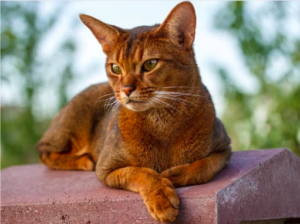
Overview
The Abyssinian is often hailed as one of the smartest cat breeds. Known for their curiosity and playful nature, Abyssinians are quick learners who thrive on mental stimulation.
Training and Activities
Abyssinians are highly trainable and enjoy interactive toys and puzzle feeders. They can learn tricks such as fetching and even walking on a leash. Their love for heights means they appreciate cat trees and climbing structures.
Siamese
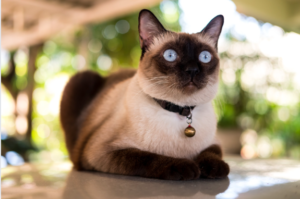
Overview
Siamese cats are not only intelligent but also highly vocal and sociable. They form strong bonds with their owners and are always eager to engage in activities.
Training and Activities
Siamese cats are quick to learn tricks and commands. They enjoy interactive play and can be trained to perform simple tasks like opening doors or retrieving items. Their vocal nature also makes them responsive to verbal cues.
Bengal
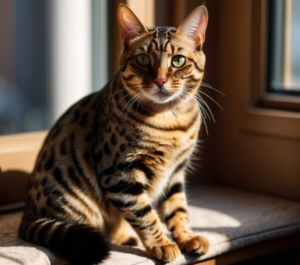
Overview
Bengals are known for their striking appearance and high energy levels. Their intelligence is reflected in their ability to solve problems and learn complex tasks.
Training and Activities
Bengals enjoy activities that challenge their minds, such as agility courses and puzzle toys. They can be trained to walk on a leash and perform tricks. Providing them with interactive playtime helps in channeling their energy positively.
Burmese
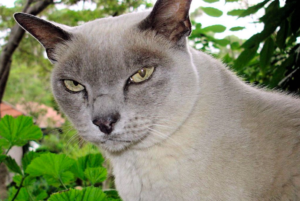
Overview
Burmese cats are affectionate, people-oriented, and intelligent. They enjoy being involved in family activities and can be trained to follow various commands.
Training and Activities
Burmese cats are quick learners and respond well to positive reinforcement. They enjoy learning tricks, playing fetch, and interactive games that stimulate their minds.
Scottish Fold
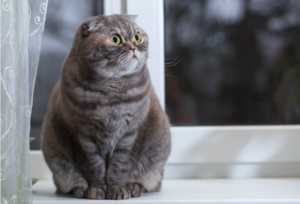
Overview
Scottish Folds are known for their distinctive folded ears and sweet demeanor. Despite their calm appearance, they are intelligent and can learn quickly.
Training and Activities
Scottish Folds enjoy interactive toys and games. They can learn tricks and commands and appreciate routines that keep their minds engaged.
Training Tips for Intelligent Cats
Start Early
Begin training your cat as early as possible. Kittens are more receptive to learning new behaviors and routines.
Use Positive Reinforcement
Reward your cat with treats, praise, or playtime whenever they successfully perform a desired behavior. Positive reinforcement strengthens the association between the action and the reward.
Keep Sessions Short and Fun
Cats have shorter attention spans than dogs, so keep training sessions brief and enjoyable. Incorporate playtime to make learning fun for your cat.
Be Patient and Consistent
Patience and consistency are key when training cats. Repeat commands and routines regularly, and avoid punishing your cat for mistakes. Consistency helps reinforce learning and builds trust.
Challenges of Training Intelligent Cats
Independence and Stubbornness
Intelligent cats can sometimes be independent and stubborn. They might choose to ignore commands if they are not in the mood, so it’s important to understand their behavior and work with it.
Need for Mental Stimulation
Highly intelligent cats require constant mental stimulation. Boredom can lead to behavioral issues, so ensure they have plenty of toys, activities, and interaction to keep their minds engaged.
Managing High Energy Levels
Breeds like Bengals have high energy levels that need to be managed. Providing them with enough physical and mental exercise is crucial to prevent destructive behavior.
Living with Intelligent Cats
Creating an Enriched Environment
An enriched environment is essential for intelligent cats. This includes a variety of toys, climbing structures, scratching posts, and interactive feeders to keep them stimulated.
Social Interaction
Intelligent cats thrive on social interaction. Spend quality time playing, training, and simply bonding with your cat to ensure they feel valued and engaged.
Understanding Their Needs
Each intelligent breed has its own unique needs and preferences. Understanding these and catering to them will help you build a strong and positive relationship with your cat.
Conclusion
Owning an intelligent cat can be an incredibly rewarding experience. These quick learners bring joy, challenge, and companionship to their owners. By understanding their unique characteristics and providing the right environment and training, you can foster a deep and fulfilling relationship with your feline friend.
Whether you choose an Abyssinian, Siamese, Bengal, Burmese, or Scottish Fold, you’re sure to enjoy the remarkable intelligence and personality they bring into your home.
Frequently Asked Questions (FAQs)
What makes a cat breed intelligent?
Intelligent cat breeds often show high levels of problem-solving abilities, adaptability, and social learning. They can quickly learn commands, tricks, and routines.
Can all cats be trained?
While some breeds are more receptive to training than others, all cats can be trained to some extent. Patience, consistency, and positive reinforcement are key to successful training.
What are the best toys for intelligent cats?
Interactive toys, puzzle feeders, and climbing structures are ideal for intelligent cats. These toys provide mental stimulation and keep them engaged.
How do I keep my intelligent cat from getting bored?
Provide a variety of toys, engage in regular playtime, and introduce new activities regularly. Rotating toys and creating an enriched environment also help prevent boredom.
Are intelligent cats more difficult to care for?
Intelligent cats can be more demanding in terms of mental stimulation and interaction. However, with the right approach and environment, they can be delightful companions.
We appreciate you for taking the time to read this article!
Finally, we hope you found this article interesting? And what do you think about ”Clever Cats: Breeds That Learn Fast!?”
Please feel free to share or inform your friends about this article and this site, thanks!
And let us know if you observe something that isn’t quite right.
Cats
The Enchanting Scottish Fold: A Guide to the Adorable Feline with Folded Ears
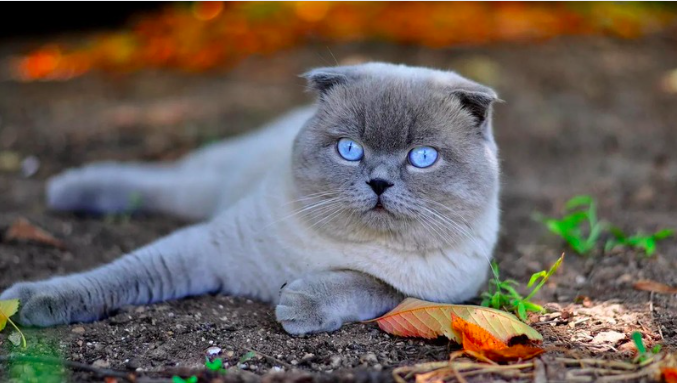
The Enchanting Scottish Fold: A Guide to the Adorable Feline with Folded Ears
Welcome to the world of the Scottish Fold cat, where charm and curiosity meet in an irresistibly adorable package. With their distinctive folded ears and sweet expression, Scottish Folds have captured the hearts of cat lovers around the world. Originally hailing from Scotland, these cats are known for their gentle demeanor, playful nature, and loving personality.
In this comprehensive guide, we will delve into the fascinating world of Scottish Fold cats, exploring their history, physical characteristics, personality traits, and care requirements. Whether you’re a seasoned cat owner or considering adding a feline friend to your family, the Scottish Fold’s unique charm and affectionate nature make them a delightful addition to any home. Join us as we unravel the enchanting tale of the Scottish Fold cat and discover why they are such beloved companions.
Fold
Overview
The Scottish Fold cat is a charming and distinctive breed known for its unique folded ears and sweet expression. Originating from Scotland in the 1960s, these cats have captured the hearts of many with their endearing appearance and affectionate nature. Scottish Folds are known for their gentle and loving temperament, making them wonderful companions for families and individuals alike.
History and Origins
The Scottish Fold breed traces its roots back to a white barn cat named Susie, who was found in Scotland in the early 1960s. Susie had a unique genetic mutation that caused her ears to fold forward, giving her an owl-like appearance. This trait was passed down to her kittens, and thus, the Scottish Fold breed was born. The breed quickly gained popularity for its distinctive look and friendly demeanor, and it was officially recognized by cat registries in the 1970s.
Physical Characteristics
- Folded Ears: The most distinctive feature of the Scottish Fold is its folded ears, which give the cat a sweet and owl-like appearance. Not all Scottish Folds have folded ears; some may have straight ears, known as “straights,” which are also common in the breed.
- Coat and Colors: Scottish Folds can have either a short or long coat, both of which are dense and plush. They come in a variety of colors and patterns, including tabby, tortoiseshell, and solid colors like white, black, and blue.
- Body Structure: Scottish Folds are medium-sized cats with a rounded appearance. They have sturdy bodies, round faces, and large, expressive eyes that give them a sweet and gentle expression.
Personality and Behavior
Scottish Folds are known for their calm and laid-back demeanor. They are affectionate cats that enjoy being around people and are often described as “lap cats” due to their love of cuddling. They are also known for their playful nature and enjoy interactive toys and games. Scottish Folds are generally good with children and other pets, making them a great choice for families.

Health and Care
- Ear Care: Due to their folded ears, Scottish Folds may be prone to ear infections. It’s important to regularly check and clean their ears to prevent issues.
- Grooming: Scottish Folds have dense coats that require regular grooming to prevent matting and tangling. Weekly brushing is usually sufficient to keep their coat in good condition.
- Health Concerns: Scottish Folds are generally healthy, but they may be prone to certain genetic conditions, including a skeletal disorder known as osteochondrodysplasia. Responsible breeding practices can help minimize the risk of these health issues.
Training and Activities
Scottish Folds are intelligent cats that can be trained to perform tricks and commands. They enjoy interactive play and benefit from toys that stimulate their minds and bodies. Providing them with scratching posts and other outlets for their natural behaviors can help keep them happy and healthy.
Compatibility with Families and Other Pets
Scottish Folds are known for their gentle and affectionate nature, making them great companions for families. They are good with children and other pets, including dogs, and can adapt well to different environments. Their loving and sociable nature makes them a popular choice for households looking for a friendly and affectionate pet.
Conclusion
The Scottish Fold cat is a unique and charming breed known for its folded ears and sweet expression. With their gentle demeanor and affectionate nature, Scottish Folds make wonderful companions for families and individuals alike. Whether you’re looking for a lap cat to cuddle with or a playful friend to keep you entertained, the Scottish Fold cat is sure to bring joy and companionship to your home.
FAQs about Scottish Fold Cats
Why do Scottish Folds have folded ears?
Scottish Folds have a genetic mutation that affects the cartilage in their ears, causing them to fold forward. This unique trait gives them their distinctive appearance.
Are Scottish Folds prone to ear problems due to their folded ears?
Yes, Scottish Folds may be more prone to ear infections due to the fold in their ears, which can trap dirt and moisture. Regular cleaning and monitoring of their ears can help prevent issues.
Do Scottish Folds have any health issues associated with their folded ears?
Scottish Folds may be prone to a condition called osteochondrodysplasia, which affects the development of their cartilage and bones. Responsible breeding practices can help reduce the risk of this condition.
Are Scottish Folds good with children and other pets?
Scottish Folds are known for their gentle and friendly nature, making them good companions for families with children and other pets. They enjoy socializing and being part of the family.
Do Scottish Folds require a lot of grooming?
Scottish Folds have dense coats that require regular grooming to prevent matting and tangles. Weekly brushing is recommended to keep their coat in good condition.
We appreciate you for taking the time to read this article!
Finally, we hope you found this article interesting? And what do you think about ”The Enchanting Scottish Fold: A Guide to the Adorable Feline with Folded Ears!?”
Please feel free to share or inform your friends about this article and this site, thanks!
And let us know if you observe something that isn’t quite right.
Cats
The Enchanting Burmese Cat: Affectionate, Playful, and Loyal
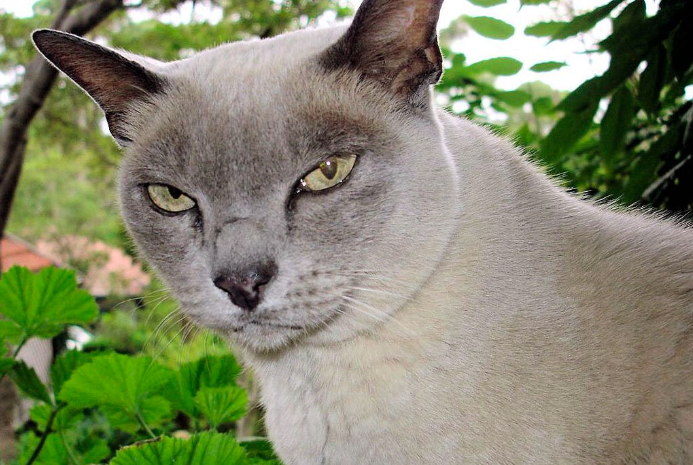
The Enchanting Burmese Cat: Affectionate, Playful, and Loyal
Enter the world of the Burmese cat, where elegance meets affection in a charming feline companion. Originating from the temples of Burma, these cats have captured the hearts of cat lovers worldwide with their striking appearance and loving nature. With their sleek coats, expressive eyes, and playful demeanor, Burmese cats are not just pets; they are cherished members of the family.
In this comprehensive guide, we delve into the captivating world of Burmese cats, exploring their history, physical characteristics, personality traits, and care requirements. Whether you’re a seasoned cat owner or considering adding a feline friend to your family, the Burmese cat’s unique blend of beauty, intelligence, and affection is sure to captivate you. Join us as we unravel the enchanting tale of the Burmese cat and discover why they are such beloved companions.
Burmese
Overview
The Burmese cat is a breed known for its striking appearance and affectionate nature. Originating from Burma (now Myanmar), these cats are renowned for their sleek, muscular bodies, expressive eyes, and silky coats. Burmese cats are often described as “people-oriented,” as they form strong bonds with their human companions and enjoy being part of the family. Their playful and curious nature makes them delightful companions for both children and adults alike.
History and Origins
The history of the Burmese cat can be traced back to ancient Burma, where they were considered sacred and kept by monks in temples. They were later brought to the West in the early 20th century and quickly gained popularity for their striking appearance and affectionate personality. The breed has since become a favorite among cat enthusiasts worldwide, known for its loving and loyal nature.
Physical Characteristics
- Coat and Colors: Burmese cats have short, sleek coats that lie close to the body. They come in a variety of colors, including sable, champagne, blue, and platinum. The coat is soft and silky to the touch, adding to the breed’s overall charm.
- Body Structure: Burmese cats are medium-sized with a muscular build. They have rounded heads, large, expressive eyes, and short, straight noses. Their compact bodies give them a sturdy appearance, and they move with grace and agility.
- Eyes and Ears: Their eyes are one of their most striking features, being large, expressive, and usually a deep, rich color that complements their coat. Their ears are medium-sized, slightly rounded at the tips, and set wide apart on the head.
Personality and Behavior
Burmese cats are known for their affectionate and sociable nature. They are often described as “dog-like” due to their tendency to follow their owners around the house and seek out human companionship. They are also highly intelligent and enjoy interactive play, making them great companions for families with children or other pets.
In addition to their affectionate nature, Burmese cats are also known for their vocalizations. They have a soft, sweet voice that they use to communicate with their owners, often engaging in “conversations” and expressing their needs and desires.
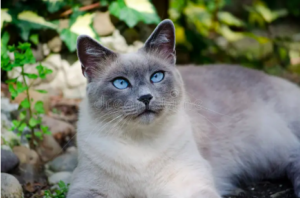
Health and Care
- Grooming: Burmese cats have short coats that require minimal grooming. Weekly brushing is usually sufficient to remove loose hair and keep their coat shiny. They also benefit from regular dental care to prevent oral health issues.
- Diet: A high-quality, balanced diet is essential for maintaining the health and vitality of Burmese cats. They should be fed a diet that is appropriate for their age, size, and activity level to ensure they receive the nutrients they need.
- Health Concerns: Burmese cats are generally healthy, but they can be prone to certain genetic conditions such as hypertrophic cardiomyopathy (HCM) and diabetes. Regular veterinary check-ups and a healthy diet can help manage these risks.
Training and Activities
Burmese cats are intelligent and can be trained to perform various tricks and commands. They enjoy interactive play and thrive on mental stimulation. Providing them with toys, puzzle feeders, and opportunities for play can help keep them entertained and prevent boredom.
Compatibility with Families and Other Pets
Burmese cats are known for their loving and social nature, making them great companions for families. They get along well with children and other pets, including dogs, as long as they are properly introduced. Their affectionate demeanor and playful nature make them a popular choice for households looking for a friendly and engaging pet.
Conclusion
The Burmese cat is a breed beloved for its affectionate nature, striking appearance, and playful personality. Whether you are looking for a loyal companion or a playful friend, the Burmese cat is sure to bring joy and warmth to your home. With their loving nature and sociable demeanor, Burmese cats make wonderful pets for families and individuals alike, enriching their lives with their presence and affection.
FAQs about Burmese Cats
What is the temperament of a Burmese cat like?
Burmese cats are known for their affectionate and social nature. They are often described as “dog-like” due to their loyalty and tendency to follow their owners around the house. They enjoy being involved in family activities and form strong bonds with their human companions.
Are Burmese cats good with children and other pets?
Yes, Burmese cats are generally good with children and other pets. They are playful and enjoy interactive play, making them great companions for families with children. They also get along well with other pets, including dogs, especially if they are introduced properly.
Do Burmese cats require a lot of grooming?
Burmese cats have short, sleek coats that require minimal grooming. Weekly brushing is usually sufficient to remove loose hair and keep their coat shiny. They also benefit from regular dental care to prevent oral health issues.
Are Burmese cats vocal?
Burmese cats are known for their soft, sweet voice, but they are not excessively vocal. They use their voice to communicate with their owners, often engaging in “conversations” and expressing their needs and desires.
What kind of environment is best for a Burmese cat?
Burmese cats thrive in environments where they have plenty of opportunities for play and interaction. They enjoy being part of the family and should have access to toys, scratching posts, and other enrichment activities. They also enjoy having access to outdoor enclosures or safe outdoor spaces where they can explore and indulge their natural instincts.
We appreciate you for taking the time to read this article!
Finally, we hope you found this article interesting? And what do you think about ”The Enchanting Burmese Cat: Affectionate, Playful, and Loyal!?”
Please feel free to share or inform your friends about this article and this site, thanks!
And let us know if you observe something that isn’t quite right.
-

 Pet Care2 years ago
Pet Care2 years agoThe Best Dog Collars For 2022
-

 Dogs2 years ago
Dogs2 years agoBichon Frise: The Happy, Playful, and Cuddly Companion
-

 Trending Pet Stories1 year ago
Trending Pet Stories1 year ago2023 ‘World’s Ugliest Dog’ Winner: Scooter’s Tale of Resilience
-

 Animals3 years ago
Animals3 years agoAre There Animals Having Down Syndrome?
-

 Pets2 years ago
Pets2 years agoThe Fascinating World Of The Red Chameleon
-

 Dogs3 years ago
Dogs3 years agoTop 10 Most Popular Dog Breeds According To AKC.
-

 Dogs2 years ago
Dogs2 years agoDogs 5 Weeks Pregnant: A Comprehensive Guide To Canine Pregnancy
-

 Dogs3 years ago
Dogs3 years ago21 Dog Breeds That Resemble Bears Or Teddy Bears!


